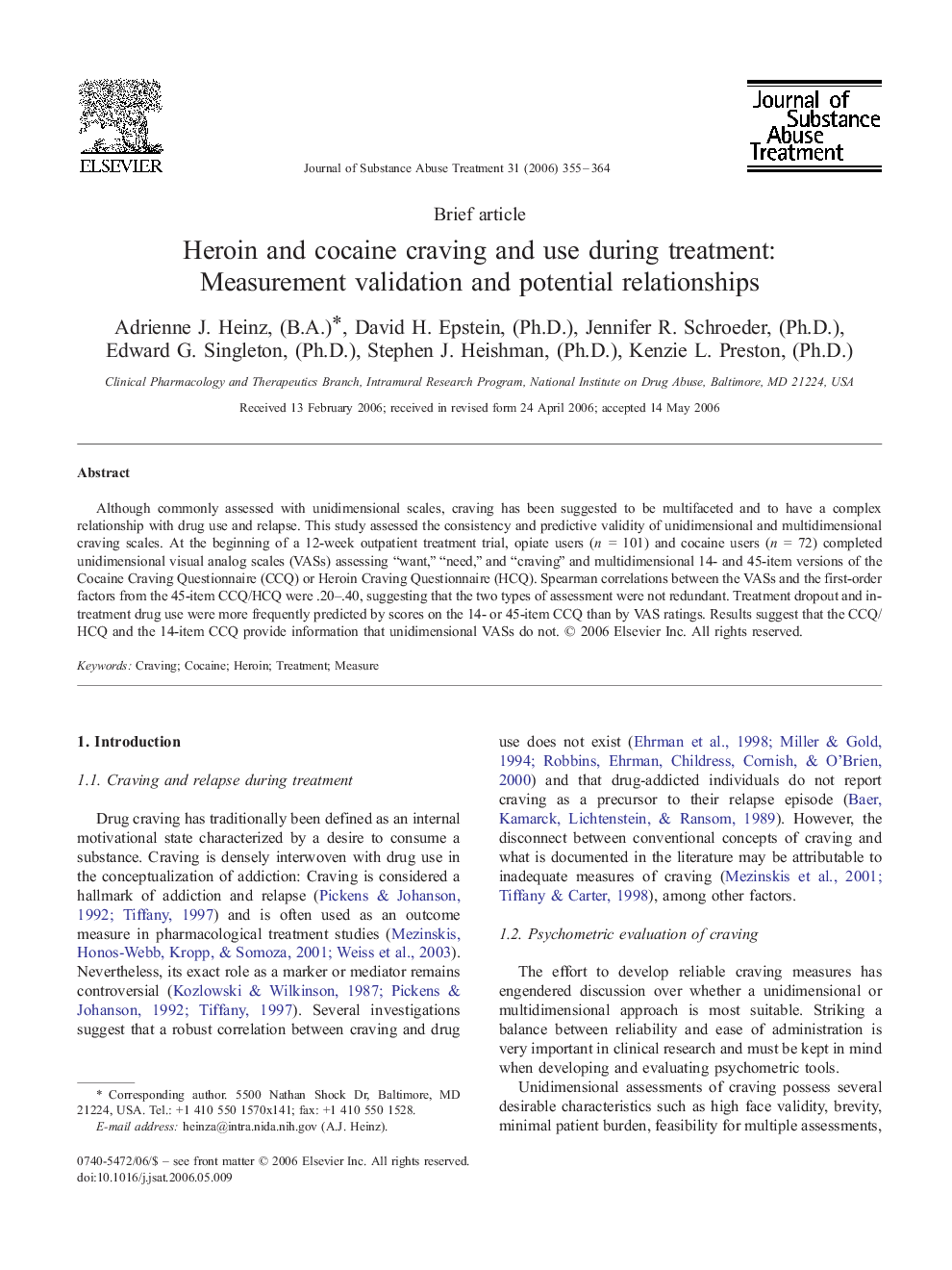| Article ID | Journal | Published Year | Pages | File Type |
|---|---|---|---|---|
| 329389 | Journal of Substance Abuse Treatment | 2006 | 10 Pages |
Although commonly assessed with unidimensional scales, craving has been suggested to be multifaceted and to have a complex relationship with drug use and relapse. This study assessed the consistency and predictive validity of unidimensional and multidimensional craving scales. At the beginning of a 12-week outpatient treatment trial, opiate users (n = 101) and cocaine users (n = 72) completed unidimensional visual analog scales (VASs) assessing “want,” “need,” and “craving” and multidimensional 14- and 45-item versions of the Cocaine Craving Questionnaire (CCQ) or Heroin Craving Questionnaire (HCQ). Spearman correlations between the VASs and the first-order factors from the 45-item CCQ/HCQ were .20–.40, suggesting that the two types of assessment were not redundant. Treatment dropout and in-treatment drug use were more frequently predicted by scores on the 14- or 45-item CCQ than by VAS ratings. Results suggest that the CCQ/HCQ and the 14-item CCQ provide information that unidimensional VASs do not.
